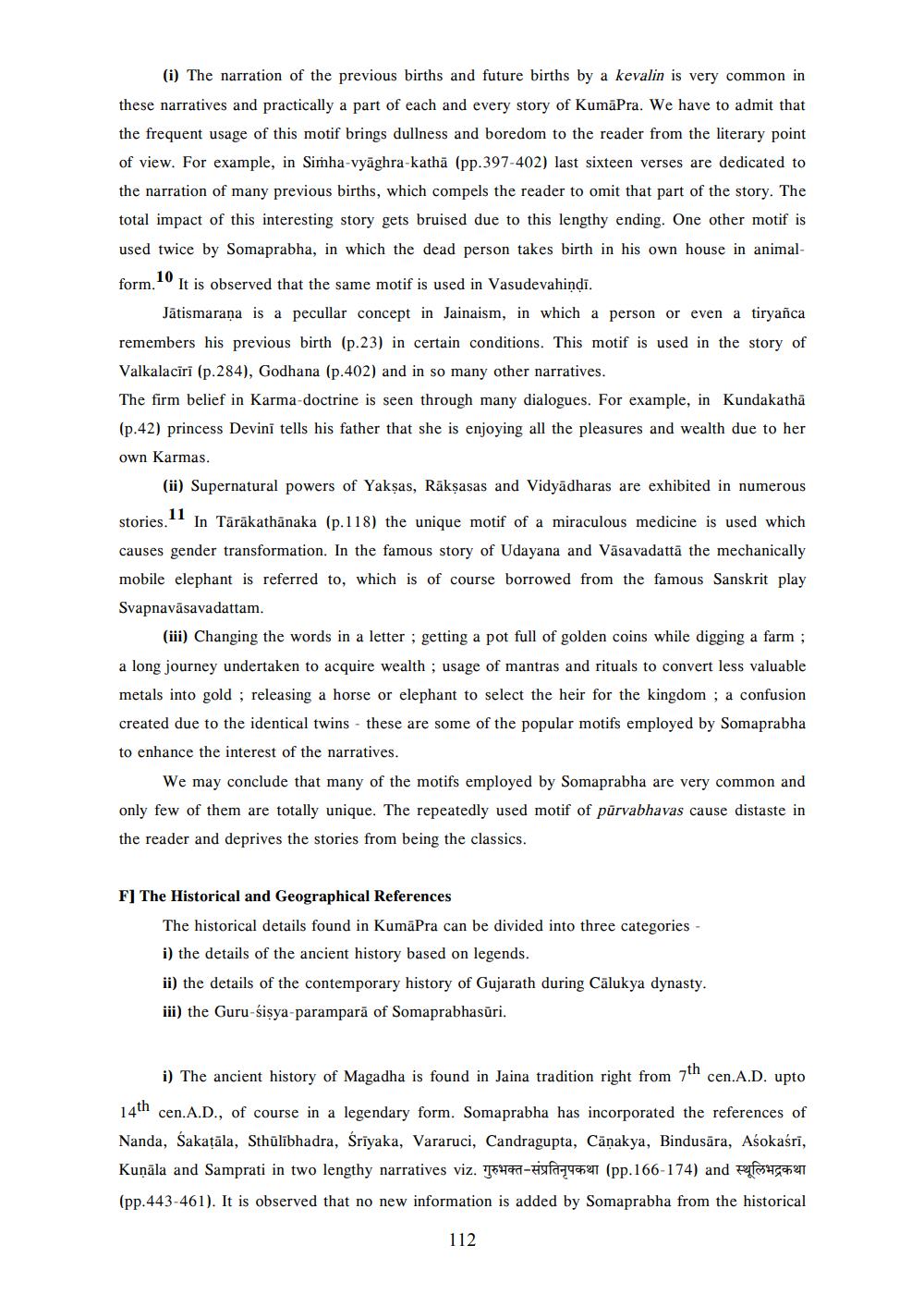________________
(i) The narration of the previous births and future births by a kevalin is very common in
these narratives and practically a part of each and every story of Kumāra. We have to admit that the frequent usage of this motif brings dullness and boredom to the reader from the literary point of view. For example, in Simha-vyāghra-kathā (pp.397-402) last sixteen verses are dedicated to the narration of many previous births, which compels the reader to omit that part of the story. The total impact of this interesting story gets bruised due to this lengthy ending. One other motif is used twice by Somaprabha, in which the dead person takes birth in his own house in animal
form."" It is observed that the same motif is used in Vasudevahindi.
Jātismarana is a pecullar concept in Jainaism, in which a person or even a tiryanca remembers his previous birth (p.23) in certain conditions. This motif is used in the story of Valkalacīri (p.284), Godhana (p.402) and in so many other narratives. The firm belief in Karma-doctrine is seen through many dialogues. For example, in Kundakathā (p.42) princess Devinī tells his father that she is enjoying all the pleasures and wealth due to her own Karmas.
(ii) Supernatural powers of Yaksas, Rākşasas and Vidyādharas are exhibited in numerous
stories." In Tārākathānaka (p. 118) the unique motif of a miraculous medicine is used which causes gender transformation. In the famous story of Udayana and Väsavadattā the mechanically mobile elephant is referred to, which is of course borrowed from the famous Sanskrit play Svapnavāsavadattam.
(iii) Changing the words in a letter ; getting a pot full of golden coins while digging a farm ; a long journey undertaken to acquire wealth ; usage of mantras and rituals to convert less valuable metals into gold ; releasing a horse or elephant to select the heir for the kingdom ; a confusion created due to the identical twins - these are some of the popular motifs employed by Somaprabha to enhance the interest of the narratives.
We may conclude that many of the motifs employed by Somaprabha are very common and only few of them are totally unique. The repeatedly used motif of pūrvabhavas cause distaste in the reader and deprives the stories from being the classics.
F] The Historical and Geographical References
The historical details found in Kumāra can be divided into three categories - i) the details of the ancient history based on legends. ii) the details of the contemporary history of Gujarath during Cālukya dynasty. iii) the Guru-sisya-paramparā of Somaprabhasüri.
i) The ancient history of Magadha is found in Jaina tradition right from 7th cen.A.D. upto
14th cen.A.D., of course in a legendary form. Somaprabha has incorporated the references of Nanda, Sakatāla, Sthūlibhadra, Sriyaka, Vararuci, Candragupta, Cāņakya, Bindusāra, Asokaśrī, Kunala and Samprati in two lengthy narratives viz. गुरुभक्त-संप्रतिनृपकथा (pp.166-174) and स्थूलिभद्रकथा (pp.443-461). It is observed that no new information is added by Somaprabha from the historical
112




